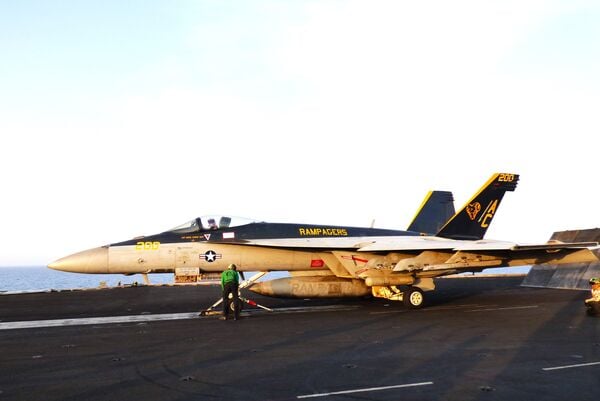
The US Navy is using aircraft carrier USS Dwight D Eisenhower 's air wing to counter unmanned threats in the Red Sea. (Janes/Michael Fabey)
The Houthis continue to refine and adapt their tactics, techniques, and procedures (TTPs) in the Red Sea region, US Navy (USN) officials acknowledged.
“They do evolve their TTPs,” Captain Marvin Scott, commander of the air group (CAG) aboard aircraft carrier USS Dwight D Eisenhower (CVN 69), which anchors Carrier Strike Group (CSG) 2 operating in the region, told Janes during a 12 June interview aboard Eisenhower in the Red Sea.
“They started off with simple UAVs [unmanned aerial vehicles] for ISR [intelligence, surveillance, and reconnaissance], one-way attacks, and then anti-ship ballistic cruise and land-attack missiles. They try now to co-ordinate and attack using multidomain and multiaccess.”
For more information on Houthi attacks, please seeUS Navy notes attack attempt using explosive-packed USV in Red Sea .
“The biggest surprise so far [during the current conflict] is how quickly [the] Houthis adapt and improve upon previous efforts. They definitely have a commitment to continue trying. It definitely keeps us busy,” Capt Scott added.
Speaking to Janes on 11 June, Rear Admiral Marc Miguez, then CSG 2 commander, said, “When we first came into theatre, the Houthis were not shooting ballistic missiles at commercial shipping. Within a short timeline, they attacked using ballistic missiles – the first time in history a ballistic was shot at commercial ships, let alone US warships.”
Miguez has since left strike group command to become USN chief of legislative affairs in Washington, DC.
Looking to read the full article?
Gain unlimited access to Janes news and more...







